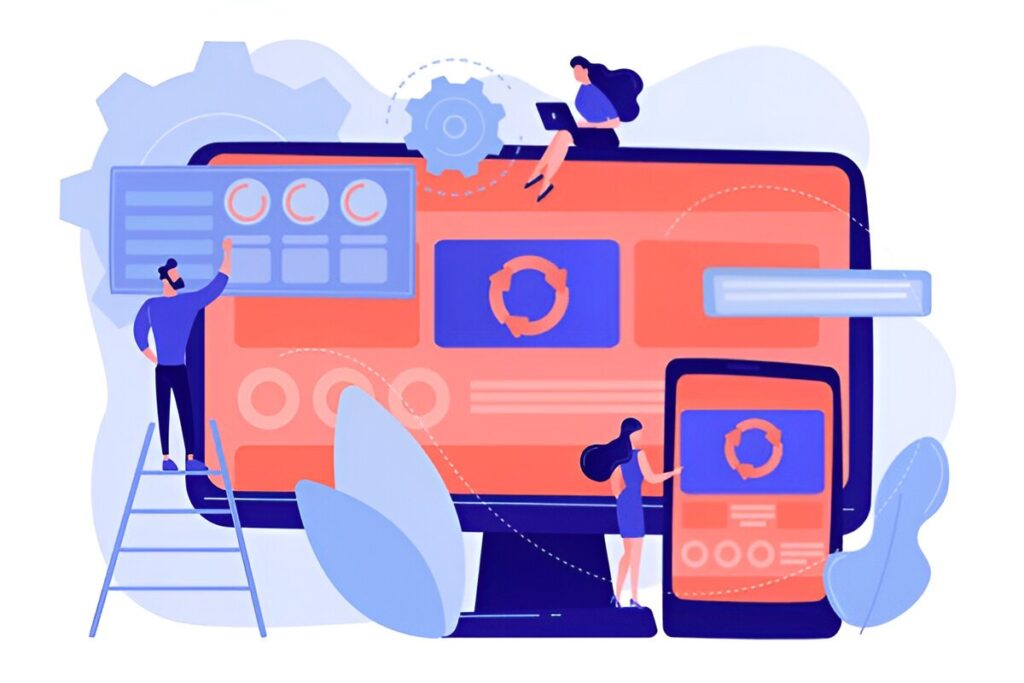
Single-Page Applications (SPAs) deliver smooth, app-like user experiences — but they often struggle with SEO and performance. For many enterprises undergoing digital transformation, this presents a real challenge: how to build highly interactive, cloud-based web apps that also rank well on search engines.
In this article, we’ll explore how to optimize SPAs for SEO and Core Web Vitals, bridging the gap between performance, discoverability, and user experience. Whether your company is developing an AI-first ERP system, an enterprise dashboard, or a customer-facing app, these best practices will help ensure both speed and visibility.
Why SEO Optimization Is Challenging for SPAs
Unlike traditional multi-page websites, SPAs dynamically load content using JavaScript instead of rendering full pages from the server. This provides instant navigation and fluid interactions — but it also hides critical content from search crawlers if not configured properly.
Search engines like Google have improved JavaScript rendering, but client-side rendering (CSR) still poses problems for:
- Content indexing: Key content may not appear in the initial HTML response.
- Metadata visibility: Dynamic title and meta tags can be missed by crawlers.
- Slow loading times: Large JS bundles hurt Core Web Vitals like LCP and FID.
For enterprise teams focused on custom software development, tackling these challenges is essential for both brand visibility and conversion optimization.
Understanding Core Web Vitals for SPAs
Google’s Core Web Vitals measure how real users experience your website. For SPAs, optimizing these metrics can make or break your performance scores:
- Largest Contentful Paint (LCP): Measures how quickly the main content loads.
- First Input Delay (FID): Measures interactivity and input responsiveness.
- Cumulative Layout Shift (CLS): Measures visual stability during load.
SPAs typically struggle with LCP and FID due to heavy JavaScript execution. To achieve higher rankings and engagement, developers must focus on reducing JS overhead, optimizing lazy loading, and improving server response times.
Checklist: How to Optimize SPAs for SEO and Core Web Vitals
Implementing SPA SEO optimization doesn’t have to be overwhelming. Below is a practical, step-by-step checklist you can follow:
- Use Server-Side Rendering (SSR) or Static Site Generation (SSG): Frameworks like Next.js, Nuxt.js, or SvelteKit help pre-render HTML for better SEO indexing and faster initial loads.
- Implement Dynamic Rendering: Use middleware to serve pre-rendered HTML snapshots to crawlers while keeping client-side rendering for users.
- Optimize Routing: Ensure each route has a unique URL and metadata using router-level configurations.
- Compress and Defer JavaScript: Use code-splitting, tree-shaking, and deferred loading to reduce bundle size.
- Lazy Load Media: Only load images, videos, and components as they enter the viewport.
- Improve Metadata Handling: Dynamically update titles, descriptions, and structured data using tools like React Helmet or Vue Meta.
- Monitor Core Web Vitals: Continuously track LCP, FID, and CLS using Google Search Console or Lighthouse.
Case Example: Improving SPA SEO for an E-commerce Platform
Consider a global e-commerce company that rebuilt its online store as a Single-Page Application using React. The app looked great and loaded instantly after the first click — but organic traffic dropped by 40% after launch.
The issue? Googlebot couldn’t index the JavaScript-rendered content. To fix this, the development team implemented server-side rendering via Next.js, introduced pre-fetching for critical resources, and optimized lazy-loading for product images. Within three months, Core Web Vitals improved by 35%, and search visibility recovered across high-intent product categories.
This case underscores the importance of aligning SPA architecture with SEO and performance optimization strategies — especially for enterprises investing in cloud-based enterprise applications or data-driven dashboards.
Technical Strategies for SPA Optimization
1. Implement Hybrid Rendering
Hybrid rendering combines SSR for initial page loads and CSR for user interactions. It ensures crawlers can access content while maintaining dynamic interactivity for end users.
2. Manage JavaScript Efficiently
Heavy JS payloads slow down page loads. Bundle analysis tools like Webpack Bundle Analyzer or Vite can help identify and eliminate unused scripts.
3. Cache and Preload Smartly
Use browser caching, CDN edge caching, and resource preloading to accelerate page rendering. Preload critical assets like fonts, hero images, and above-the-fold components.
4. Optimize API Performance
SPAs often rely on APIs for data fetching. Implement caching, pagination, and GraphQL batching to reduce API call latency. Fast APIs enhance FID and reduce network dependency.
5. Leverage AI for Performance Insights
AI-powered observability tools can predict performance bottlenecks and recommend optimizations. This aligns with the Pexaworks vision of building intelligent, high-performance web ecosystems that blend automation with insight.
Enhancing UX and Accessibility
Optimizing for SEO also means optimizing for humans. Accessibility and UX directly affect engagement and conversions. Consider:
- Using ARIA tags and semantic HTML to improve screen reader compatibility.
- Maintaining consistent design through reusable components.
- Ensuring mobile responsiveness and fast load times across devices.
By integrating custom software development and UX design principles, businesses can achieve higher retention and brand trust — critical for modern digital transformation initiatives.
Measuring and Reporting SPA SEO Success
Data-driven insights help communicate SPA performance improvements to stakeholders. Monitor these KPIs:
- Organic traffic growth (via Google Search Console)
- Page experience scores (via Lighthouse)
- Engagement metrics (via Google Analytics)
- Conversion rate changes after optimization
Regular audits ensure your SPA stays compliant with Google’s latest SEO and performance guidelines.
Building SEO-Friendly, High-Performance SPAs
Optimizing Single-Page Applications for SEO and Core Web Vitals is not just a technical upgrade — it’s a competitive advantage. SPAs that load fast, index properly, and deliver smooth interactions can dramatically improve both search visibility and customer satisfaction.
Enterprises that align front-end innovation with performance optimization are better equipped to scale, adapt, and thrive in the modern web ecosystem.
Ready to elevate your enterprise web applications? Partner with Pexaworks for expert guidance in optimizing SPAs, building scalable architectures, and ensuring your digital presence performs at its best


